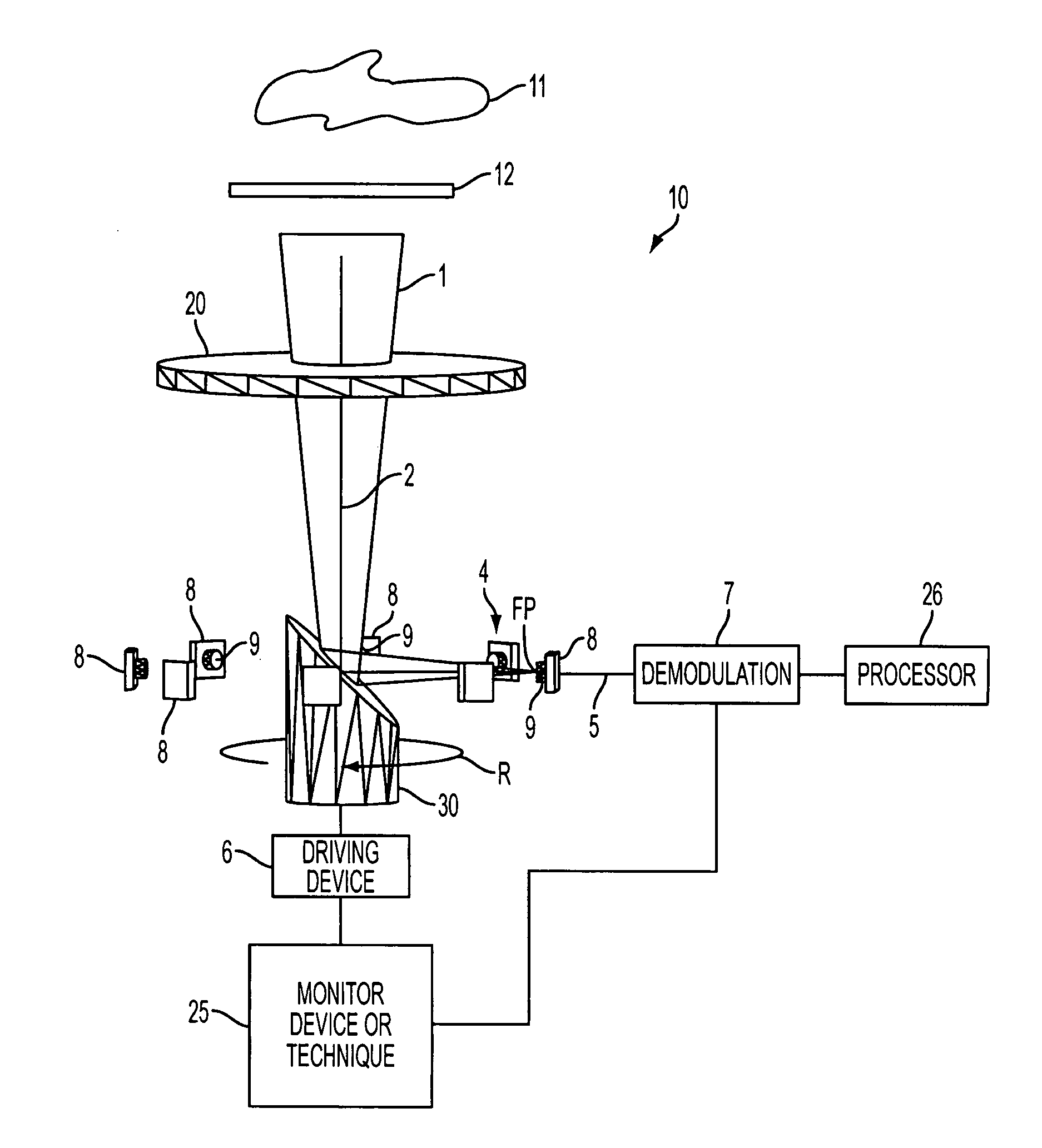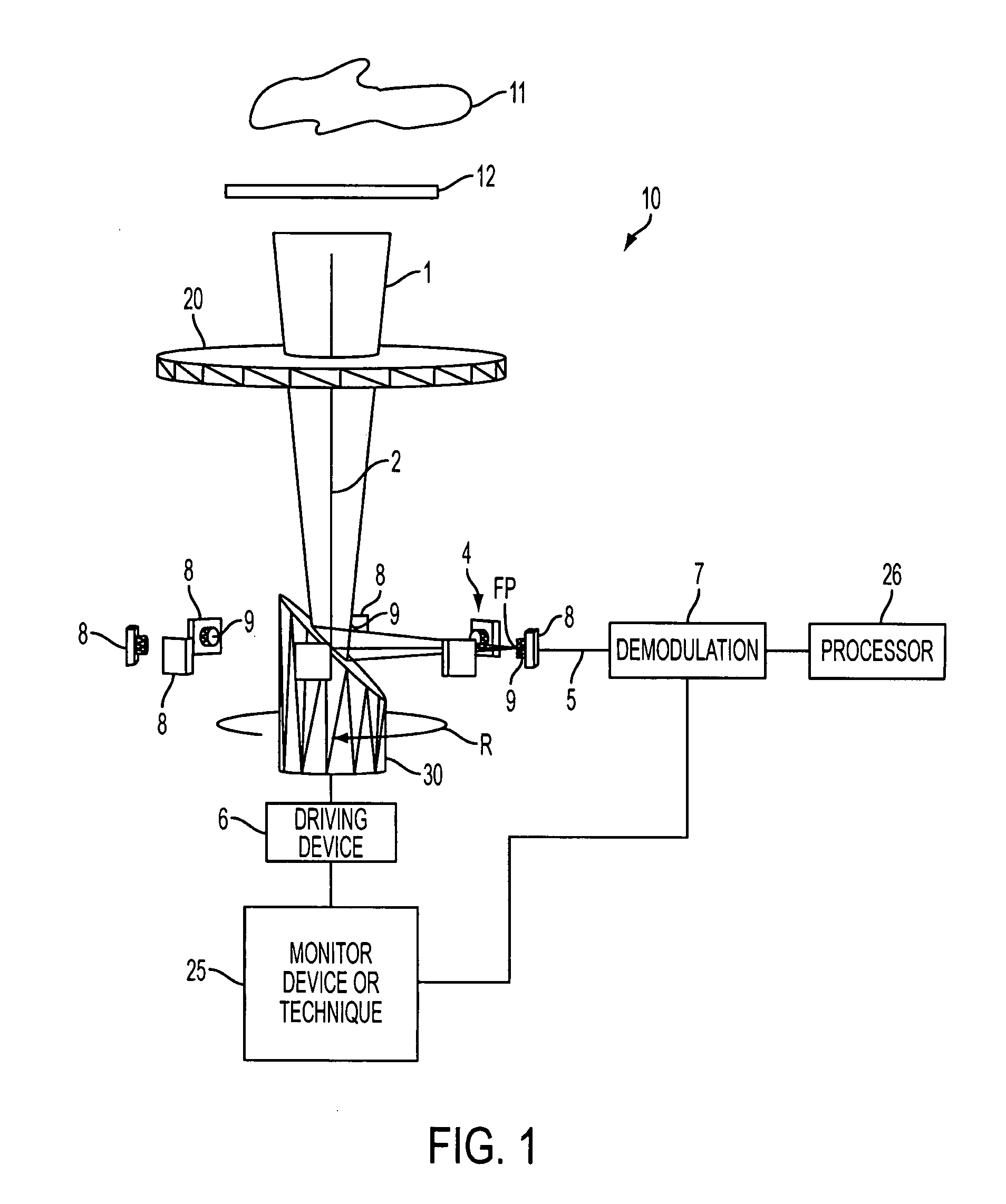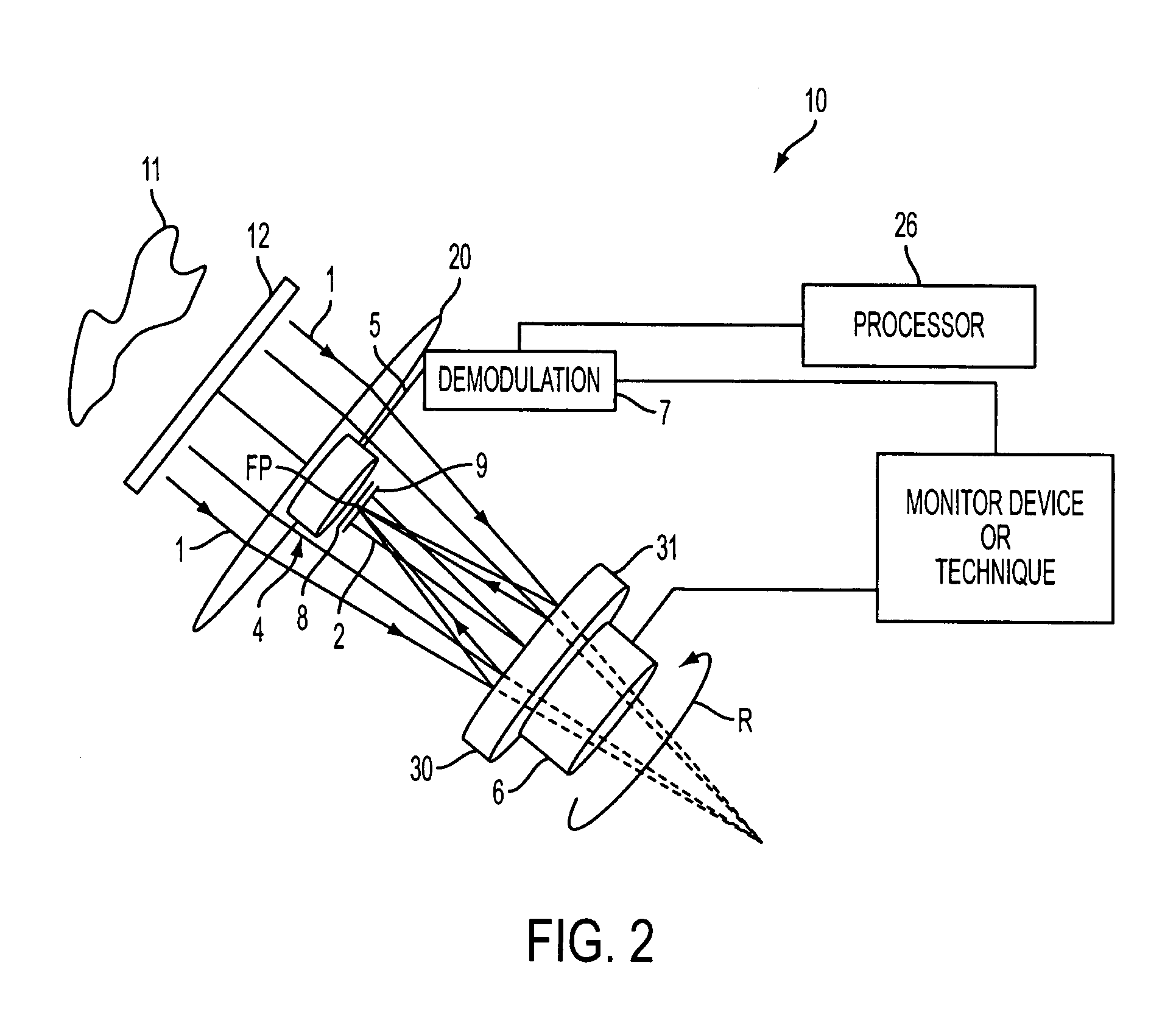System and method for remote sensing and/or analyzing spectral properties of targets and/or chemical species for detection and identification thereof
a technology of spectral properties and remote sensing, applied in the field of remote sensing and/or analyzing spectral properties of targets and/or chemical species, can solve the problems of large population centers in the vicinity of such plants, large and heavy, and large amount of material, etc., and achieves the effect of low cost, robust and simpl
- Summary
- Abstract
- Description
- Claims
- Application Information
AI Technical Summary
Benefits of technology
Problems solved by technology
Method used
Image
Examples
Embodiment Construction
[0029]Referring to FIG. 1, FIG. 1 schematically illustrates an embodiment of the present invention system for remote sensing and / or analyzing spectral properties of targets as a means to detect and identify them. An embodiment of the system 10 includes a light gathering device 20, which collects and focuses incoming radiation 1 emitted directly by the target or radiation from an illuminating source partially absorbed by the target and / or chemical species 11 to be analyzed. A folding optical element 30 directs this collected and focused radiation from the light gathering device 20 to an array 4 of detectors 8. A spectrally discriminating optical element 9 is in front of or in the optical path of at least some of the detectors 8 for spectrally resolving the collected radiation. Some examples of spectrally discriminating optical elements 9 include, but not limited thereto, bandpass filters, notch filters, long and short pass filters, diffraction elements, polarizer filters, or combinat...
PUM
| Property | Measurement | Unit |
|---|---|---|
| frequency | aaaaa | aaaaa |
| relative movement | aaaaa | aaaaa |
| reflection angle | aaaaa | aaaaa |
Abstract
Description
Claims
Application Information
 Login to View More
Login to View More - R&D
- Intellectual Property
- Life Sciences
- Materials
- Tech Scout
- Unparalleled Data Quality
- Higher Quality Content
- 60% Fewer Hallucinations
Browse by: Latest US Patents, China's latest patents, Technical Efficacy Thesaurus, Application Domain, Technology Topic, Popular Technical Reports.
© 2025 PatSnap. All rights reserved.Legal|Privacy policy|Modern Slavery Act Transparency Statement|Sitemap|About US| Contact US: help@patsnap.com



